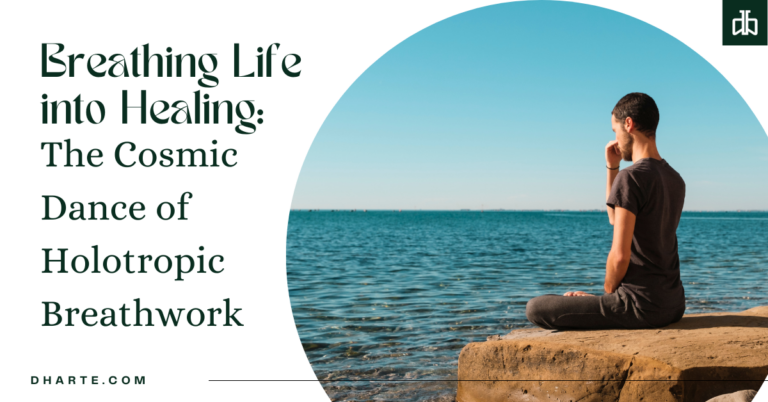Unleashing transformative power through the rhythm of the breath and melody of consciousness
As the world turns its attention to awareness, healing and self-discovery, an innovative practice continues to gather global recognition: Holotropic Breathwork. A creation of Stanislav Grof and his late wife Christina Grof, this technique uses a simple yet potent tool we all possess – our breath. Combined with immersive music and targeted bodywork, Holotropic Breathwork promises an enriched link with innate spirituality and remarkable physical and emotional restoration.
Participants of Holotropic Breathwork wield accelerated breathing techniques, synchronised with select music and further bolstered by specific bodywork. This harmonious mix encourages a deep dive into the psyche, reaching areas of consciousness usually blocked from our daily lives. The experience has been profound, creating room for substantial spiritual experiences and supplying rich emotional healing and physical stress release.
Holotropic Breathwork carves an alternative path for individuals seeking a departure from traditional pathways of meditation and healing. Evidently, it delivers more than just discipline; those who undertake this journey often describe a renewed sense of self-assurance, heightened awareness, and a deeply rooted connection with their inner selves.
The torchbearer bringing Holotropic Breathwork to new territories such as India is Fr. KC Thomas. A distinguished academic with a Masters in Philosophy and a Diploma in Integral Counselling Psychology, Fr. KC Thomas is also the Founder Director of the Don Bosco Institute of Psychology and Spirituality. Considered a research scholar at Sedona University, he represents Grof Transpersonal Training for both India and Sri Lanka. More information about his enlightening workshops can be found on the Don Bosco Institute website.
Here’s how you can practice Holotropic Breathwork:
- Set the Space: Find a quiet and comfortable space where you won’t be disturbed. Create a cozy and safe environment, perhaps dimming the lights and using pillows or a mat for comfort.
- Choose the Music: Select music that is specifically designed for Holotropic Breathwork sessions. This music typically consists of a variety of genres, including tribal beats, classical, and electronic elements. The music serves as a guide and support for the journey.
- Get into a Comfortable Position: Lie down on your back or find a comfortable seated position. Close your eyes to turn your focus inward.
- Focus on the Breath: Begin with deep, conscious breathing. The breathwork involves a specific pattern of fast and rhythmic inhalations and exhalations. This intense breathing helps to activate the unconscious mind and induce a non-ordinary state of consciousness.
- Allow the Experience: As you continue the rhythmic breathing, let go of control and allow whatever thoughts, sensations, or emotions arise. The goal is to access the inner healing intelligence of the psyche.
- Express Yourself: It’s common for intense emotions or memories to surface during Holotropic Breathwork. Express yourself through sounds, movements, or even artwork if you feel inclined. This can aid in the integration of the experience.
- Integration: After the breathwork session, take some time to reflect on your experience. Consider journaling or discussing your insights with a trusted friend or practitioner. Integration is a crucial part of the process.
- Practice Safely: It’s recommended to practice Holotropic Breathwork under the guidance of a certified facilitator, especially for beginners. Facilitators create a safe space and provide support throughout the session.
Holotropic Breathwork is a profound method that has been reported to lead to deep insights, emotional release, and a sense of spiritual connection. However, it’s essential to approach it with respect, ensuring a safe and supported environment for your journey within. If you’re new to this practice, seeking guidance from an experienced facilitator is highly recommended.
References:
Don Bosco Institute of Psychology and Spirituality
Information about Holotropic Breathwork
Also Read:- The power of sound healing in balancing our emotions, mind, and body.






